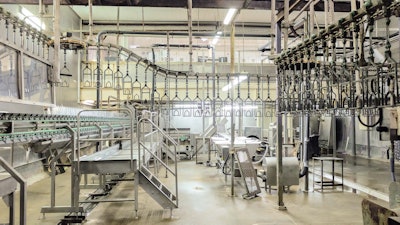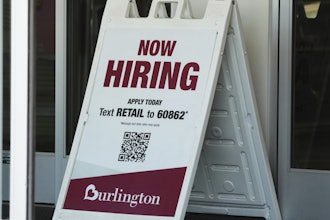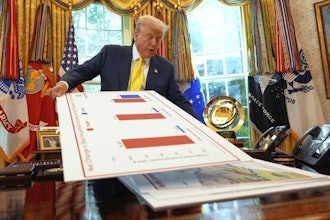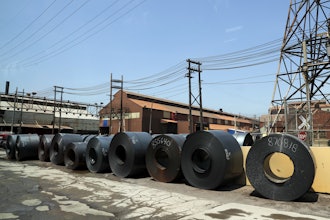
President Donald Trump's America First Program might just lead to a rush of reshoring of production and jobs, as well as more foreign direct investment (FDI) in America. The inconvenient truth is that America is not ready to reshore production because we are facing serious workforce shortages in almost all manufacturing industries. In most cases, the talent doesn't exist for these high-skilled jobs. Manufacturing is going to have to develop training that gives people the physical skills to do these high-tech jobs.
This is not a new problem. I have copies of Deloitte surveys going back to 1990, which predicted the need for skilled manufacturing workers and the skills gap. A 2024 Deloitte and Manufacturing Institute study estimates the U.S. manufacturing industry could need 3.8 million jobs by 2033, but nearly half (1.9 million) could remain unfilled due to a talent shortage and workforce development challenges.
For too long, we've treated workforce development programs as a form of welfare for the recently unemployed. An Aspen Institute research paper released this week argues that federally funded workforce development—one of the key levers for long-term productivity growth—remains mostly relegated to reactive anti-poverty policy rather than a forward-looking economic strategy. Right now, we spend less on vocational training than nearly every other industrialized nation—just 0.1% of our GDP. This needs to change.
I recently read a speech by Jim Farley, the CEO of Ford, who really put this problem into proper perspective. He said, "As a CEO today, I hear every day about how new technologies like AI are going to transform our economy. But I can't help thinking about the work AI can't replace: the millions who primarily work with their hands. That includes tens of thousands of Ford hourly employees and skilled tradespeople who make our manufacturing system run every day and the millions who use our commercial trucks and vans to get their work done."
Farley adds, "These hands-on workers are part of what we call America's 'Essential Economy.' This 95-million-strong workforce powers the critical industries we rely on to keep our economy running—industries whose jobs have long been springboards to the middle class and foundations for strong, stable communities. Sectors like construction, agriculture, skilled trades, transportation, energy, and manufacturing sustain 3 million businesses and deliver $12 trillion in GDP. The Essential Economy is the backbone of this country. And it's in danger."
Farley continues, "In my own industry, we're going to need over 400,000 new auto techs over the next three years just to keep pace with demand. The construction industry is short half a million workers today, and manufacturers need 419,000 more workers for expanding factories."
4 Reasons Why Young People Aren't Interested in Manufacturing Jobs
- The Emphasis on College: The first problem is that there is still a pervasive cultural emphasis on college education. American households still believe in a four-year college degree as the primary path to success.
- Skill Gaps: High school education often lacks the technical skills and basic education skills needed for modern manufacturing, leading to a mismatch in workforce preparation. This problem is not just about teaching vocational skills in high schools. The last time I was in Washington, D.C., I visited the National Assessment of Educational Progress (NAEP) to learn about the test results of high school students. I was startled to find out that in math, science, and reading, only 24% of all high school graduates were proficient in the year 2019, which means 76% of the students were not proficient. I don't know what is going on with high school education systems, but we're not graduating students with the basic skills for entry-level jobs in manufacturing, much less to compete on a global scale.
- Another problem is that most high school students don't pursue STEM (Science, Technology, Engineering, and Mathematics) courses. They view STEM as too difficult, and there is a lack of interest, inadequate preparation, and, for many schools, limited access to STEM curricula.
- The Dying Industry Perception: According to the Economic Policy Institute, American corporations have outsourced more than 5 million jobs, and 91,000 plants have closed since 1997. So why wouldn't young people see U.S. manufacturing as a declining or dying industry? There are many more attractive and safer vocations young Americans can pursue these days (like nursing, programming, or working at Amazon).
- Wages: According to the Bureau of Labor Statistics, the median wage for machinists in America is $50,840. It takes 8,000 hours of apprentice training to be awarded a journeyman certificate. Many young people view the years of training to become a machinist versus the wages as not worth it.
 Information sourced from the U.S. Bureau of Labor Statistics.
Information sourced from the U.S. Bureau of Labor Statistics.
4 Ways to Fix Those Problems
- The Emphasis on College: This is an opportunity, because tuition has priced college beyond the financial ability of many young people, and burdensome college loans are also a turnoff. Manufacturers need to promote the skilled trades by offering paid apprenticeships, on-the-job training to earn a journey-level card, benefits while earning a livable wage, avoidance of student loan debt, and highlighting clear career paths and advancement opportunities. This isn't just a job, it's a career.
- Skill Gaps: My assumption is that most entry-level blue-collar shop floor workers will be high school graduates who aren't going to college. This may mean that manufacturers could also have to invest in remedial education classes to improve reading, math and science skills.
- The Dying Industry Problem: Manufacturing is not going to change its bad image unless it can reduce outsourcing and quit buying machining services, tool and die molds, and foundry products from Southeast Asia—and begin reshoring production. They are going to have to prove to recruits that there is some semblance of job security.
- Wages: The median wages after completing an apprenticeship must be worth the effort. In 2021, I received a postcard from FedEx here in Portland, Oregon, which stated, "Starting up to $25.50 per hour with no experience required." And the Amazon distribution center near my home was offering $23 per hour with no experience. Wages are a big problem; manufacturers are going to have to take a hard look at wages if they are to get their fair share of young applicants and compete with other industries.
America is not ready to reshore production because we are facing serious workforce shortages in almost all manufacturing industries. In most cases, the talent doesn't exist for these high-skilled jobs. Manufacturing is going to have to invest in apprentice training that gives people the physical skills to do these high-tech jobs.
President Trump's Workforce Solution
President Trump's solution is called: America's Talent Strategy: Building the Workforce for the Golden Age.
America's Talent Strategy plan is a 2025 federal plan by the U.S. Departments of Labor, Education, and Commerce to transform the American workforce. Key components of Trump's workforce development strategy include:
- Emphasizing skilled trades and alternatives to four-year degrees and moving away from the "college-for-all" approach.
- It prioritizes and seeks to expand registered apprenticeship programs and modernize Career and Technical Education (CTE) programs. Trump signed an executive order on April 23, 2025, directing the Departments of Labor, Education, and Commerce to set a goal of reaching and surpassing one million new active apprentices annually and expand registered apprenticeships in high-demand fields like manufacturing, skilled trades, and emerging technologies. In June 2025, the U.S. Department of Labor awarded nearly $84 million in grants to states and territories to help increase the capacity of registered apprenticeship programs.
Trump deserves credit for both the goal and the $84 million in grants awarded, but this is not enough money to develop a 1-million student apprentice plan. The strategy also recognizes the increasing impact of AI and seeks to prepare the workforce for the AI-driven economy—but AI can't teach the physical skills needed in apprentice training.
The strategy emphasizes a demand-driven approach, positioning employers as co-designers of training programs, and training will be aligned with the needs of key industries. Finally, accountability is a central theme, with proposals to reform or eliminate programs that are deemed ineffective based on outcomes.
However, at the same time as the Executive Order announcement, the administration continues to slash federal spending. Some federal funding for apprenticeship programs and apprenticeship-related research projects has been caught in the administration's efforts to downsize government and curtail DEI work.
The Trump administration's proposed budget for fiscal year 2026 includes a significant cut of $1.64 billion to workforce development funding under the Department of Labor. The proposal introduces a new program called Make America Skilled Again (MASA), which would consolidate various existing workforce programs into a single block grant for states.
The Department of Government Efficiency (DOGE) website shows about $18 million in cuts to three grants issued by the Department of Labor's Office of Apprenticeship. Some grants supporting apprenticeship programs have been cut to trim costs or for perceived connections to diversity, equity and inclusion (DEI)work. The fear is that spending cuts in general could scare off employers or state agencies that might have invested in these programs.
As of September 2025, Congress has not enacted specific legislation to fund President Trump's "America's Talent Strategy."
Like his tariff program, the apprenticeship initiative is inconsistent and contradictory. What is needed is a nationwide program that is funded well enough to train workers to fill the projected 1.9 million unfilled jobs, as well as 1million new apprenticeships per year.
One of the big questions is whether America's multinational corporations will invest in apprentice-type programs that take thousands of hours to complete. For decades, these companies have avoided high-skilled apprentice training by buying the services and products from Asia. They will probably demand financial incentives, tax abatements, and subsidies to invest in training programs.
Perhaps, it will take a tidal wave of reshoring and a national emergency to incentivize both the government and corporations to make the training investment.
Michael Collins is the author of "Dismantling the American Dream: How Multinational Corporations Undermine American Prosperity." He can be reached at [email protected] or mpcmgt.net.






















